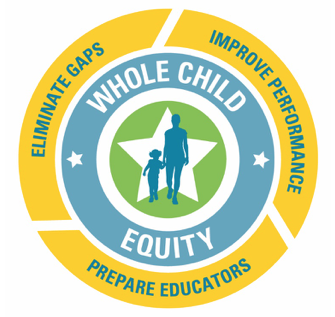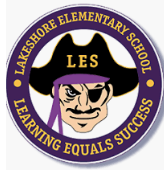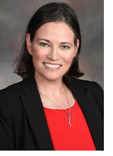
With Ambitious Resolution, State Board Vows to Ensure Equity for All Students
The State Board of Education approved a far-reaching resolution this month intended to ensure that all public schools statewide achieve equitable opportunity for all students. The Board passed the resolution on an 8 - 3 vote, with dissenting members questioning parts of the guiding document but not disagreeing with its overall spirit or goal.
The Board also approved, by a 7 - 3 vote, an action framework for its 2025 Strategic Plan, making equity, along with “whole child,” one of two guiding principles for the framework. The plan includes three key goals: Eliminate opportunity gaps by 2025,Improve school and district performance by 2025, and Increase educator preparedness to meet the needs of every student by 2025. The framework outlines various objectives and steps need to achieve each of the three goals.
Both the Board’s Equity Resolution & Action Framework define equity as“the belief and practice of ensuring that every student is treated in a fair and just manner, providing the necessary allocation of resources for the success of every student, and eliminating discriminatory barriers to full participation and opportunities for every student.”
Included in the resolution is a commitment by the Board to work with the state superintendent and the Department of Public Instruction to create and maintain an equity officer to ensure consistency and continuity with that guiding principle both inside and outside the department.
A number of Board members urged support for the equity resolution, which they said helped focus the Board’s long-held beliefs and commitment at a time when the issue of social justice is at the forefront nationwide.
“If not now, then when,” said Board member Reginald Kenan. “The when is now.” But he said that while the resolution is an important step, delivering on its promise will be key.
“Talk is good, but action is better,” Kenan said. “Let’s show the folks that we believe in equity, not just on paper.”
Maureen Stover, the 2020 North Carolina Teacher of the Year who serves as an advisor to the Board, said she was thrilled that the Board was committing itself to closing opportunity gaps for all students.
“The Strategic Plan and equity resolution provide us with the opportunity to lay the groundwork that will benefit the kids in our schools today and future generations of North Carolinians,” Stover said. “We owe it to our kids to remove barriers so they can reach their ultimate potential.”
Board member JB Buxton said that both the resolution and framework reinforce the Board’s recently introduced plan to address the state’s educational needs detailed in the long-running Leandro lawsuit.
“Both of these documents breathe real life and spirit into the work we’ve done to live up to our constitutional duty,” Buxton said. “Taken together, they show the seriousness and commitment of this Board.”
Among Board members who raised objections to the resolution was Olivia Oxendine, who questioned the potential scope and power of an equity officer, the Board’s definition of equity and fairness and whether a group that helped review the resolution included representation from rural communities or American Indians.
“I take this resolution very seriously,” Oxendine said. “It’s a big promise. It’s a huge promise.”
Board member Amy White, who also voted against the resolution, said she disagreed with a statement in the document that both historical and current systems in the state’s schools have been inequitable, inadequate and unequal.
“In the years that I’ve been on this Board, I’ve worked tirelessly to make sure that underserved communities and students in the state of North Carolina have had as much access as I could personally give, and as this Board has worked together to provide,” White said. “I feel like we already are working towards moving all students to success.”
|
Charter Schools with NC ACCESS Grants Present Initiatives Aimed at Improving Enrollment Diversity
Leaders from two charter schools that have received grants from the state’s $36.6 million NC ACCESS Program aimed at increasing support for educationally disadvantaged students in charter schools told the Board how their schools and students are benefitting from the effort.
The two schools – Invest Collegiate Imagine in Asheville and Exploris Charter School in Raleigh – have seen their enrollments of educationally disadvantaged students grow as a result of the grant, which requires schools to use a weighted lottery to fill seats. Schools participating in the program must also provide a transportation plan as well as a lunch plan – critical factors that when missing, can discourage families from charter school options.

“We did go out in the community quite a bit this spring and winter to share this opportunity,” said Jenn Townley, head of school at Invest Collegiate. “We think marketing with a weighted lottery is a vital piece of it being successful.” She said the school was able to reach its goal of 30 percent educationally disadvantaged students in its first weighted lottery this past spring. “We had a huge response to it.”
Townley said the grant is also helping the school purchase additional school buses. “Transportation is the most key of all the things to making the school accessible to educationally disadvantaged students,” she said. “This grant has been vital to our ability to provide the transportation in our community.”
She said the addition of a school-based health center, at no cost to her school, was a big piece of the puzzle. “Everyone has to feel welcome and safe at our school, and wrap-around services really help with that.”
As with Exploris, Invest Collegiate has used the grant funding to provide professional development for culturally responsive teaching and supporting staff with such issues as racial equity. And both schools have also invested in technology to provide all students with digital devices and other needs.
|

Amanda Northrup, associate director of Exploris, said the school was able to increase its enrollment of educationally disadvantaged students from 10 percent to 18 percent in its first year of using a weighted lottery and has a goal of reaching 25 percent.
“We were not in alignment with Wake County schools for educationally disadvantaged students,” Northrup said. “We feel strongly that we should be in alignment.”
Dave Machado, director of the Office of Charter Schools for the Department of Public Instruction, said the ACCESS program is achieving real success.
“This grant has moved the needle more than anything else that has happened in the charter school world in the 23 or 24 years that we’ve been in existence,” Machado said. “Through these presentations, you saw charter flexibility. You saw innovation. You saw sharing of best practices, and you saw an intentional effort to lower barriers in our high-quality charter schools.”
|
Board Recognizes Two 2020 STEM Schools of Distinction; Regional Teachers and Principals of the Year
For special recognitions, Board members heard presentations from two schools selected this year as N.C. STEM Schools of Distinction. Lakeshore Elementary School, in the Iredell-Statesville district, earned the “prepared designation” under the state’s STEM school recognition program, and Hawk’s Nest STEAM Academy in Gaston County was honored as a “model” STEM school.

“The STEM Schools of Distinction program holds schools to incredibly high standards that prepare highly educated, global ready students empowered with the social-emotional skills for success,” DPI STEM Consultant Howard Ginsburg told the Board. “It’s a well-earned testament to the amazing educational practices that benefit our students, our schools and our communities.”
|

“Both of these schools have shown, even in the shadow of COVID-19, an incredible commitment towards igniting the passion for creative learning and growing a culture of STEM education within their communities,” Ginsburg said.
The two schools join 30 others across the state that have been recognized as STEM Schools of Distinction since the program’s inception in 2014.
|

Maureen Stover, 2020 Burroughs-Wellcome Teacher of the Year, introduced the cohort of regional teachers of the year as her “trusted group of experts.”
“I may not always have all the answers, but I have a team who does,” Stover told the Board. “We are nine educators who represent all eight regions of the state. … Our diversity is our strength, so we can he the best advocates that we can for the students and teachers in North Carolina.”
Stover said that as a group, the 2020 teachers of the year will focus on two key issues: promoting equitable education to remove barriers to a sound, basic education and on increasing support for social-emotional learning in the state’s public schools.
|

Kisha Clemons, the 2020 Wells Fargo Principal of the Year, introduced her cohort of regional principals of the year as a group that shares “an unwavering commitment to all students, all educators and all families.”
Clemons told the Board that “as a school leader, I believe that our work in schools and everything we do must be filtered through an equity lens.
“We must have the courage to lead social justice and equity. We must challenge the status quo, dismantle systems of oppression and advocate for our most vulnerable, marginalized populations.”
|

North Carolina’s 2020 Cohort Graduation Rate Shows Gains
North Carolina’s four-year cohort high school graduation rate increased to 87.6 percent with the class of 2020, up from 86.5 percent for the 2019 graduating class, DPI Accountability Director Tammy Howard told the Board in presenting this past year’s graduation results. Since 2006, when North Carolina first reported a cohort graduation rate – then 68.3 percent – this critical measure of student success has improved by more than 19 percentage points.
Gains among several student groups outpaced the state’s overall increase last year, continuing a trend in the state that has seen gaps closing for minority and economically disadvantaged students against the rate for white students and the state’s total overall. Except for students with disabilities and those with limited English proficiency, the four-year graduation rate for all subgroups exceeded 80 percent.
The latest increases for student groups that have been underrepresented as high school graduates and in postsecondary education add to 15 years of strong gains in graduation outcomes that have exceeded the state’s overall growth of 19.3 percentage points.
The four-year graduation rate for students from low-income families has increased by 26.6 percentage points since 2006, reaching 82.2 percent, while the rate for black students has increased by 24.8 points, to 85.2 percent. The graduation rate for Native American students has increased 34 points since 2006, reaching 85.1 percent for the class of 2020. The gain for white students was 17.2 points over the same period, reaching 90.7 percent for the most recent class.
As a result of those gains, persistent gaps evident in 2006 have narrowed significantly. The gap between white and black students, for example, has closed by more than half, from 13.1 points in 2006 to 5.5 points in 2020; a similar trend is seen between students from low-income families and the state as a whole, closing from 12.7 points in 2006 to 5.4 points in 2020.
|

Board Approves Resumption of Teacher Evaluations for 2020-21
After suspending teacher evaluations that were incomplete when schools were closed in March, the Board this month voted to resume evaluations of teachers for the current year and with instruction that may be delivered remotely and online.
Robert Sox, director of educator standards and evaluation for DPI, told that Board that while evaluations were suspended during the spring, the reason was because teachers and students were unfamiliar with remote instruction and schools were making rapid adjustments to the new circumstances wrought by the statewide school closure.
“There was an inaccurate assumption that we stopped using NCEES (NC Educator Evaluation System) in March because there was something about the tool that was not valid for evaluating [teachers],” Sox said. “However, the thing that was valid for evaluating was actually the unstable instructional context.”
But with the new school year, he said, NCEES should be applied.
“As teachers now move forward with standards and curriculum using remote and blended learning models, the use of NCEES is even more critical for supporting educators as they align and refine their instruction in this new context,” Sox said. “Observation is essential for supporting teachers’ practice.”
Sox explained that the NCEES evaluation rubric includes a number of dimensions that cover both synchronous and asynchronous instruction and that evaluators would include observations of online instruction.
|
Board Approves Formulas for Allocating Governor’s Emergency Education Relief (GEER) Funds for K-12 Education
The Board approved funding formulas for allocating a total of $60 million that Gov. Roy Cooper has designated for the state’s public school districts and charter schools from a total of $95.6 million in the Governor’s Emergency Education Relief (GEER) fund that was part of the federal CARES Act.
Of the $60 million for K-12 education, Cooper has designated $40 million for districts and charter schools to hire additional support personnel including school nurses, counselors, social
workers, and psychologists. The remaining $20 million will be used to support the academic needs of low-income, at-risk students and students with disabilities. The funds can be used during a two-year period ending in September 2022.
“The governor’s focus with the GEER funds was to really hone in on what types of supports do both our K-12 and our post-secondary students need who have been most impacted by the pandemic and who can benefit from additional supports this school year and next school year,” Geoff Coltrane, Cooper’s education advisor, told the Board.
Coltrane said that the funding formulas were designed to support even the smallest districts and charter schools with sufficient funding to help hire support personnel. The formula includes the following components:
- Shall be based on 2019-20 allotted ADM for LEAs and 2019-20 funded ADM for other eligible public school units
- LEAs shall receive a base amount of funding equal to 50% of the average salary and benefits of a state funded instructional support position ($38,664) plus a dollar per ADM
- Charter schools, lab schools, regional schools, and the ISD shall receive the higher of 12.5% of the average salary and benefits of a state funded instructional support position ($9,666) or a dollar per ADM
The $20 million for supplemental instructional services may include these kinds of costs:
- Employing or contracting with instructional personnel, such as certified teachers or teacher assistants
- Paying stipends for NC Education Corps members
- Providing tutoring services or after school programming
- Purchasing instructional resources, curriculum materials, or devices (no more than 10% of allotment)
The funds will be allotted to districts and schools based on this formula:
- 50% of funds allotted based on 2019-20 allotted ADM for LEAs and funded ADM for other public school units
- 50% of funds allotted based on the students in poverty per the 2017 census for LEAs; other public school units shall receive an average dollars per student in poverty
|